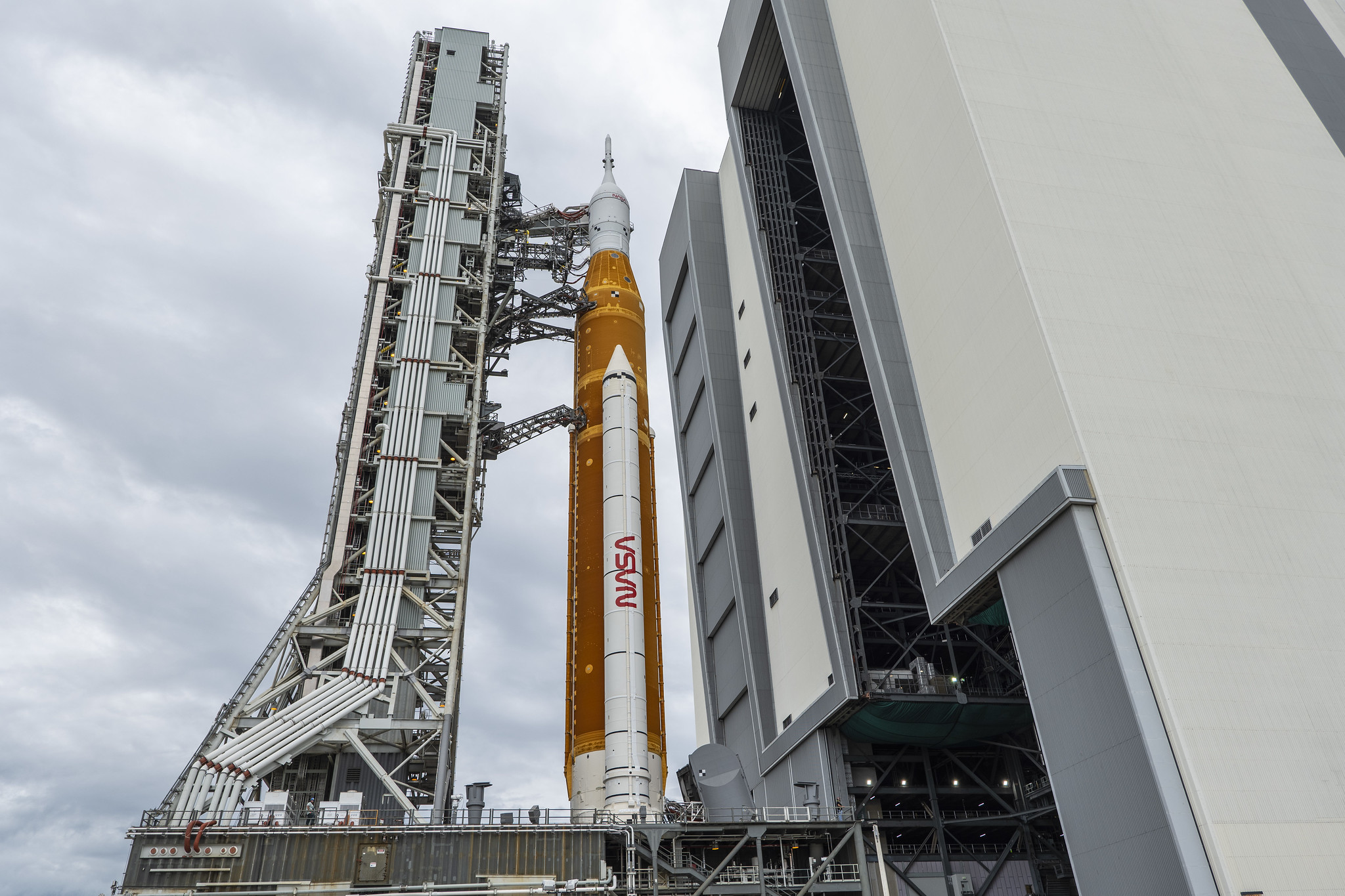WASHINGTON – NASA’s Artemis I test flight spacecraft is set to roll out onto launchpad 39B on Friday ahead of the targeted Nov. 14 launch date, despite a possible incoming storm system, NASA announced in a media briefing on Thursday.
The launch was previously delayed by Hurricane Ian in late September, NASA communications official Rachel Kraft said. The Orion spacecraft had to be moved back into the Vehicle Assembly Building at the Kennedy Space Center in Florida due to the storm.
“Since rolling back to the VAB for Hurricane Ian, the team has been hard at work, work has gone smoothly, and we’ve been able to protect the rocket from the hurricane,” said Cliff Lanham, senior vehicle operations manager of the Exploration Ground Systems Program.
The Artemis I test flight is an uncrewed mission that will travel beyond the Moon and back to Earth to test propulsion and controls on the Space Launch System rocket and the next-generation Orion crew module.
“There’s challenges that come with this complex of a vehicle, and where we’re flying, and how we’re getting there,” Jim Free, associate administrator of the Exploration Systems Development Mission Directorate, said.
Meteorologists at NASA are monitoring the development of an area of low pressure near Puerto Rico that will slowly move toward Florida over the weekend, potentially impacting the Artemis I mission.
“There’s still a lot of inconsistencies on exactly where that may end up, and whether or not it does acquire significant tropical characteristics to even become a named storm,” Mark Burger, launch weather meteorologist, said.
NASA officials told reporters on a media call that they had decided to move forward with the rollout Thursday night, after assessing the storm’s possible impact on the rocket.
The team anticipates the highest impacts from the system on Monday and into Tuesday, which may include rain squalls with wind gusts of 35-40 knots, but those conditions would be well within NASA’s limits for the spacecraft’s exposure to weather, Burger said.
“We’re confident in the decision process that went into that, we talked about a lot of the same things we talked about with the hurricane,” Free said. “Certainly the wind force is not the same and the duration is not the same… so our engineering team said it was an okay risk to go out tonight.”
NASA’s Nov. 14 launch has a liftoff planned in a 69-minute window that begins at 12:07 a.m. EST that day, Kraft said.
There are two backup dates in the November launch window, Free said: Nov. 16 at 1:04 a.m. and Nov. 19 at 1:45 a.m.
Teams have a preference for launching in the daylight, but it is not a requirement, Free said.
Daylight launch options are restricted through the end of the year because the Federal Aviation Administration regulates holiday air space.
The downside of night time launches, Free said, is a loss of visuals, but the “big fire shooting out the back” of the rocket will help light up the launchpad.
“Everybody asks, ‘Are you confident in going after a launch attempt?’ If we weren’t confident, we wouldn’t roll out. If we weren’t confident, we wouldn’t start the countdown when we do. So yeah, we’re confident moving forward,” Free said.
The Artemis I mission will send the unmanned Orion and a service module provided by the European Space Agency out to the Moon and into an orbit about 60 miles above the Moon’s service. The spacecraft will orbit the Moon for weeks, then return to Earth.
The mission is slated to cover more than 1 million miles, with splashdown in the Pacific Ocean set for Dec. 9.
The Artemis I will be the opening of a series of space flights aimed at eventually establishing a long-term presence at the Moon.

